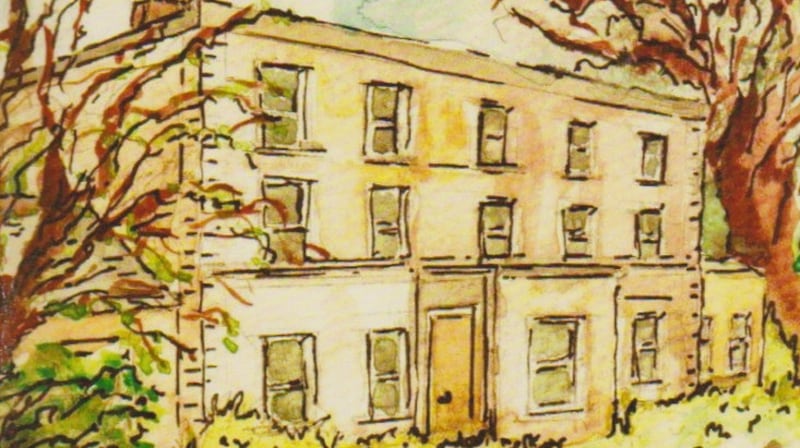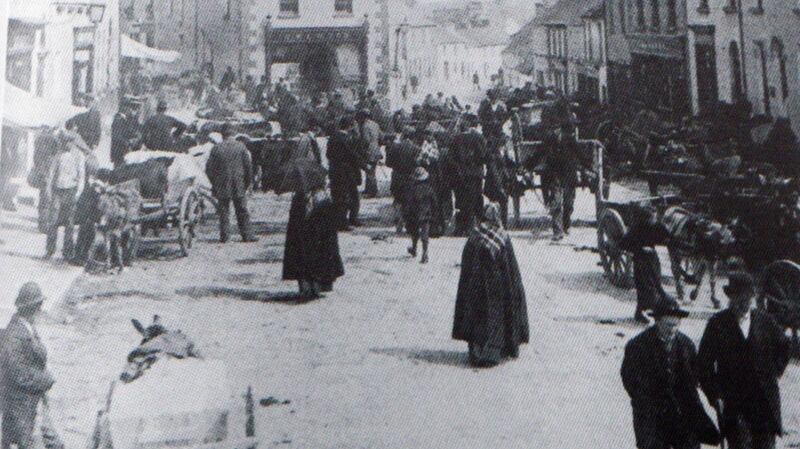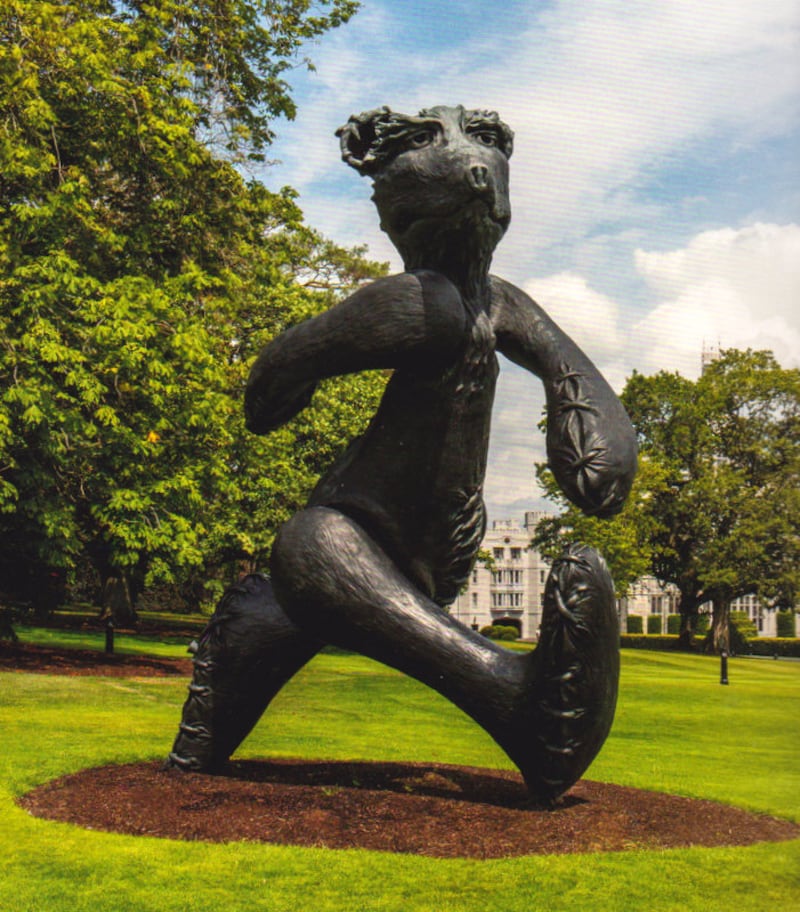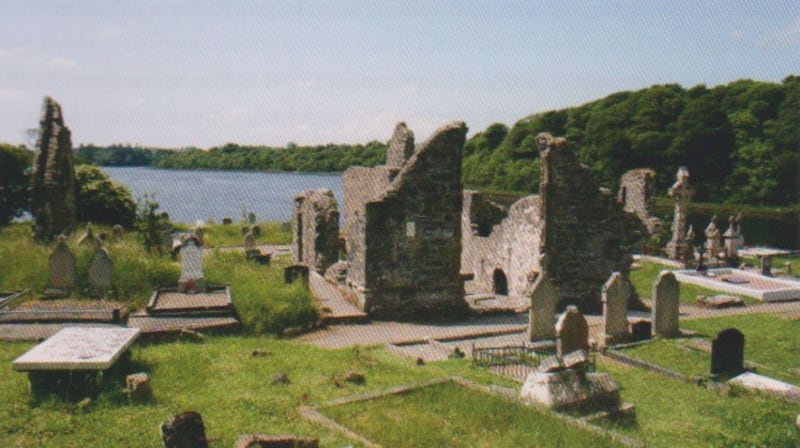Few pleasures can compare with a passionate expert describing their work and Frank Keohane constructs an engaging and idiosyncratic picture in Cork City and County (Yale, £45) the first Munster volume modelled in the Pevsner architectural guide series. He haunts not just the city, but many one-street villages, churchyards, out-of-the-way places and overgrown ruins, coming across oddities and unlocking mysteries with stimulating detail.
From the grandiose set pieces such as St Fin Barre’s Cathedral, Bantry House and Charles Fort, to the almshouses, dovecotes, clapper bridges and gunpowder mill complex at Ballincollig, an exceptional richness of architecture is presented. A substantial introduction weaves through history and landscape, while the rigorously organised contents embrace archaeology, medieval buildings, castles and tower houses, friaries, priories and a few surprises.

Many structures are cherished but some such as Vernon Mount in Douglas were destroyed by fire in 2016 after years of what the author calls “inexcusable neglect”. Architectural history can be dry but he speaks his mind about aspects of the built heritage: Carrigaphooca Castle is “gaunt in the extreme”, Cobh is down-at heel, while he finds Schull overrun with late 20th-century holiday homes.
Entries are mostly short, although room is made for inessential detail. Succinctness of description is a valuable quality, especially when applied to the entry on the famed Stone at Blarney Castle, “which is in fact the lintel to the central machicolation on the s. side”. Packed with 126 colour pictures, this guide will tempt you to enjoy Cork perambulations and be your browsable companion enriching the built heritage on your doorstep.
As a contrast, the 290-year history of one north Cork house is explored in Ballinacarriga, Kilworth: A House, A Family, A Village (€12) by Noel Howard. Remarkably, the house survived the looting and destruction which was the fate of many other properties in the highly charged atmosphere of 100 years ago. In fact, Kilworth has the dubious distinction of being the only place where de Valera was shot at during the Irish civil war. Built about 1730, Ballinacarriga's chequered past is meticulously documented. Originally home to the Pyne family, it was taken over by the Corban-Lucas family in 1851 whose descendants still occupy it 150 years later.

In the late Victorian era it became a guesthouse where army officers and their wives stayed, and during the first World War it was used by officers from Kilworth camp. At various times it was rented out to Murphy’s Brewery as a holiday house and was used by the YMCA, falling into disrepair for a decade. The author believes it may have escaped destruction because the Corban-Lucases had a reputation for being kind employers who accommodated the religious practices of the time and had a marked absence of an Upstairs Downstairs mentality.
An authoritative and eye-opening study of the buildings of Athlone takes the reader along the banks of the Shannon and through a tumble of narrow lanes and passageways. Streets of Athlone (€49) by Donal O'Brien considers houses with colourful doorcases, churches and bridges all oozing history. Mirroring the layout of the town, the book is divided between the Leinster and Connacht sides, and perusing its pages reveal evocative placenames such as Stirabout Harbour, Swaddling Lane and the Squeezelopes Market.

Gone are the yacht and boatbuilders, saddlers and harness makers, Geoghegan’s Coach Factory, the Woollen Mills and Quinn’s pub (known to locals as “Lourdes” because people called in for a cure in the morning). But in the black-and-white images, old billheads mingle with venerable Athlonian names such as Burgess, the longest established department store in Ireland stretching back to 1839 and still trading, Sean’s Bar on main street – the oldest in the world according to Guinness World Records – and the famed Broderick’s Sunshine Bakery, owned by the family of novelist John Broderick.
One of the town’s most curious ecclesiastical buildings, the Church of Saints Peter and Paul (often mistaken for a cathedral) was opened in 1937 and stands conspicuously in the showy Baroque and Classical style, looking as if it would be more at home in a Neapolitan or Roman square. It dwarfs the castle opposite which has had a chequered history from its original wooden structure built by Turlough O’Connor in 1129.
The elegant townhouses of a celebrated Georgian Dublin street are repopulated with the imprint of their original occupants in The Best Address in Town: Henrietta Street, Dublin and Its First Residents, 1720-80 (Four Courts Press, €30) by Melanie Hayes. This handsomely illustrated book recounts the stories and social aspects of the first 60 years of the street, a place where peers rubbed shoulders with property tycoons and military men mixed with the elite of fashionable society.

The author brings to life what went on behind the red-brick facades in the world of personalities such as Sir Gustavus Hume, Archbishop George Stone, Henry O’Brien, the earl of Thomond, and the Rt Hon. Nathaniel Clements. Through fresh archival and newspaper research, and with colour illustrations, this volume illuminates the social and architectural history of the street alongside engaging biographies of the occupants. Many were well connected, including the parliamentarian and banker Luke Gardiner, described by the artist Mary Delany as “a very honest, hospitable, friendly, good man with a little pepper in his composition”.
Long an integral part of the Limerick landscape, Adare Manor, from its early days as a medieval manor house to the 21st century luxury resort and facelift, is the focus of Turtle Bunbury's Adare Manor: The Renaissance of an Irish Country House (Adare Manor, €60). Inspiration came from the Dunravens in 1832 when they built a house modelled on similar European styles. Extensive restorations in 2016 helped protect the historical nature of the building, honouring the architectural heritage as a Neo-Gothic masterpiece. The 2nd Earl of Dunraven, who oversaw the building of the original house, maintained that his spirits never failed to immediately recover when he returned home. Standing in the lawns is The Bear sculpture by Patrick O'Reilly, a 4.5-metre-high bronze of a giant bear and the largest figurative bronze cast ever made in Ireland.

The story of one of Connemara's most dramatically sited buildings, Kylemore Abbey, is brought to life in The Benedictine Nuns & Kylemore Abbey (Irish Academic Press, €19.95) by Deirdre Raftery and Catherine KilBride, the first fully illustrated account of the Irish Benedictines and their monastery. With the scenic slopes of Garraun mountain as a background and Kylemore Lough in the foreground, the original castle was built in 1868 by Mitchell Henry, a London doctor turned politician who later represented Co Galway as an MP from 1871-1885.
In those days the castle boasted no fewer than 33 bedrooms and four sitting rooms, as well as a ballroom, billiard room, library, study, smoking room, and even came equipped with a gun room. It was bought in 1903 by the Duke and Duchess of Manchester but they were forced to sell it because of gambling debts. During the first World War, the Benedictine Order’s monastery in Flanders was destroyed and they bought the castle and lands at Kylemore in 1920 which has been their home for 100 years. The nuns developed the Victorian walled garden, restored the Gothic chapel and opened the building to the public where they sell handmade soap and chocolate.

The history of another abbey of an older vintage is detailed in Abbey of Donegal: Headstones & Heritage (Tirconnell Books, €20) by Séamus O'Doherty. Founded in 1474, the abbey is synonymous with the Annals of the Four Masters, as well as Red Hugh O'Donnell and the story of Tir Chonaill (Donegal). The book considers its influence on events in Ireland from the 15th century. But it is also the story of the O'Donnell chieftains of Tir Chonaill and their epic struggle as one of the last strongholds against English rule in Ireland. The book concentrates on the graves of more than 400 people buried in the Abbey from the O'Donnell chieftains and their sub-chieftains up to the present. They are recorded with inscriptions, maps and photographs alongside anecdotal information.
Paul Clements’s new travel book, Shannon Country: A River Journey through Time is published the Lilliput Press












